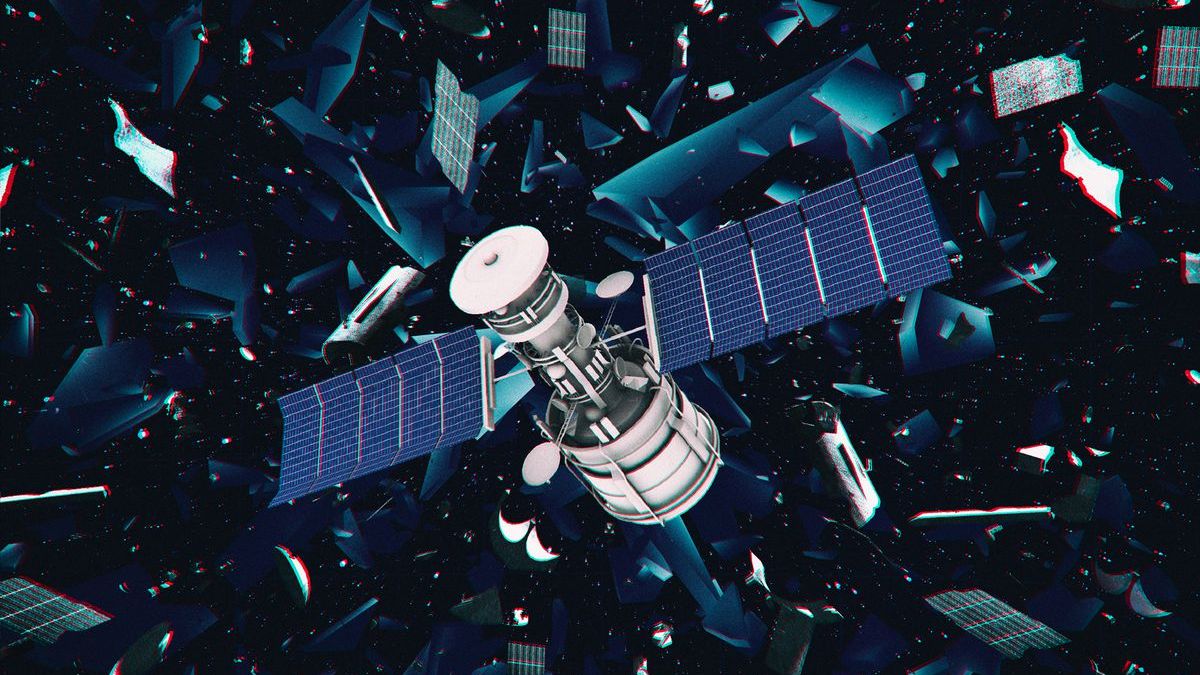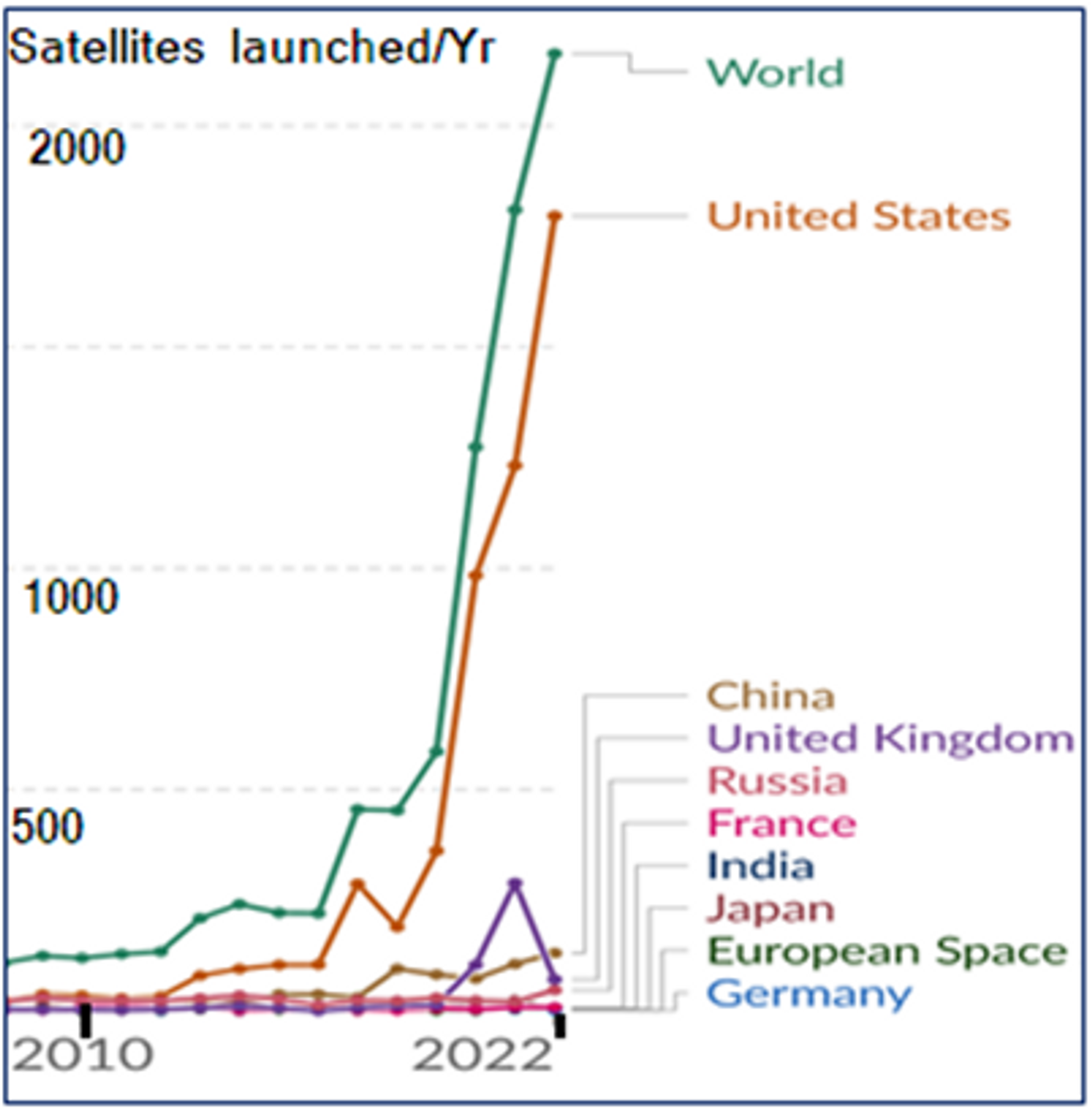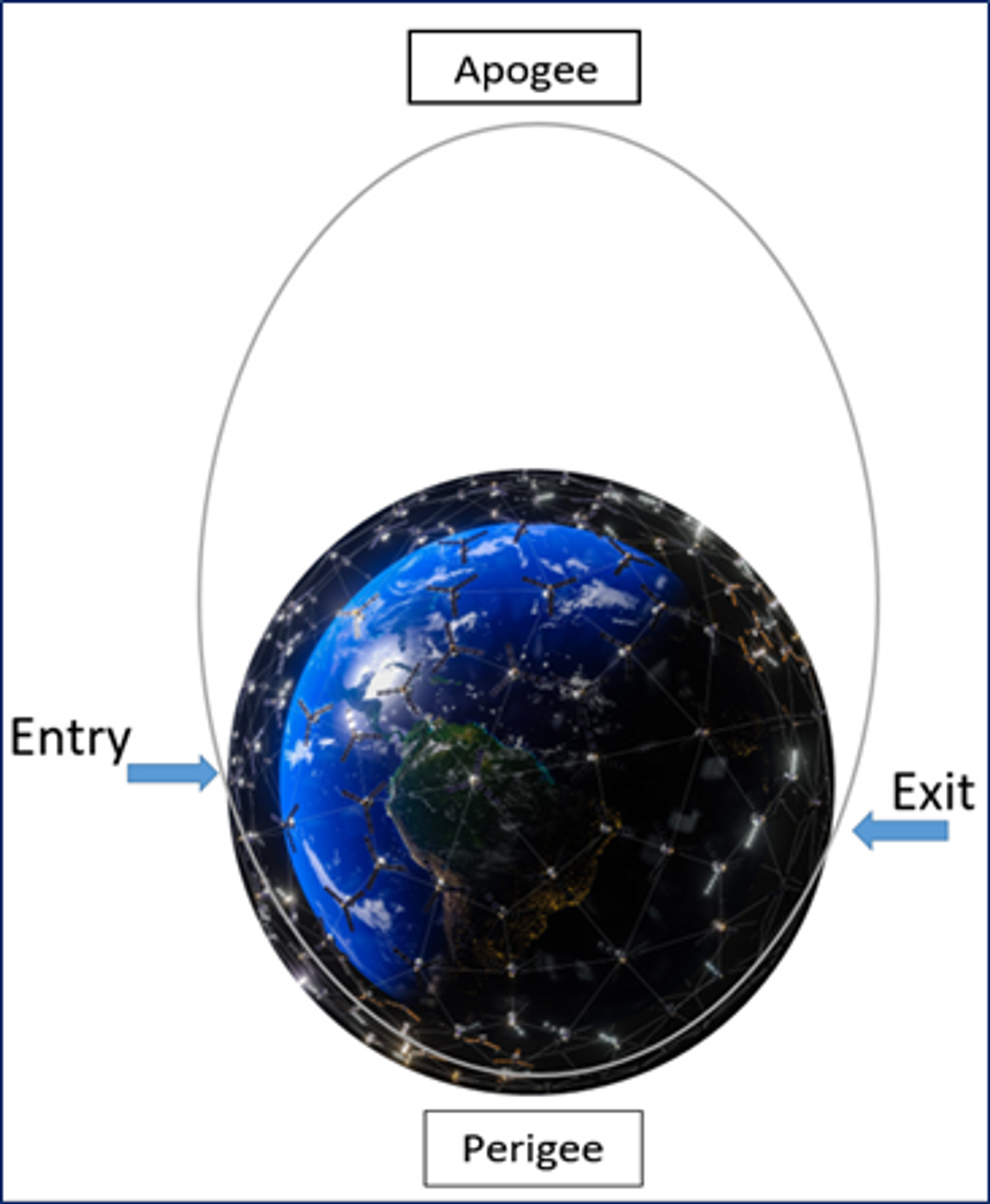
Dangers of Satellite Collisions in Space
In the coming months/years, there will be increasing needs of God’s blessings for Space Missions to be able to succeed. These blessings will be for all stakeholders despite their scientists having achieved perfection in the designs & manufacture of their crafts as well as having executed perfect mission planning. The readers may wonder why? Advanced nations having near-perfected space technologies are aware of it. The reason is pretty simple, the dangers of unexpected collisions during the numerous launches and deployment of satellites in the orbits that are getting cramped up.
Threats in Space
Every rocket launched into space, whether into Earth Orbits or heading for Deep Space / Interplanetary activities, leaves / discards some parts of the rockets or its payloads that remain in space for substantial durations, depending upon its trajectories in relation to the Earth. Objects in non-orbital or vertical / inclined trajectory fall to the Earth in reasonably short time. This time depends upon the altitude of its separation from the payload and the forces of attraction applicable between the object and the Earth or the quantum of Earth’s Gravity applicable at those altitudes. It must be realised that Earth’s Gravity within deep space is dependant not only by its distance from the centre of Earth but also on the influence of Solar and other planetary gravities emanating from extra-Solar systems. On the other hand, objects discarded in orbital trajectories or the broken parts of the destroyed satellites in orbit, remain there for substantial periods. Although velocity decays at greater altitudes in access of 10,000 Km are minimal, any fall of objects by unit distance keeps boosting its velocities, thus keeping it in lower orbits for very long times.
The Overcrowding of Satellites
According to the Index of Objects Launched into Outer Space, maintained by the United Nations Office for Outer Space Affairs (UNOOSA), there were 11 330 individual satellites orbiting the Earth at the end of June 2023; a whopping 38% increase since January 2022 (read “How many satellites are orbiting the Earth in 2023?”, https://www.pixalytics.com/satellites-orbiting-earth-2023/). This number will continue growing rapidly in the coming years with the launch and deployments of new constellations, each having several hundreds if not thousands of satellites each, mainly in the LEO. ‘One Web’ of UK and ‘Starlink’ under SpaceX of USA are awaiting the launch of thousands of their satellites in the near future
The LEO is going to get so crowded in the coming years and decades that there are distinct possibilities of the satellites in various orbits coming very close to each other or even colliding if there are unexpected path deviations or orbital decays in some. These collisions will be severe if the objects are moving in opposite directions or in greater inclination orbits to each other. It is another foregone conclusion that with increasing ablation of the upper atmosphere into the LEO, decays of satellites will be accelerated (read “Massive Shock Waves of Space Launches : Big Threat to Atmosphere”, https://thecounterviews.com/articles/massive-shock-waves-of-space-launches-big-threat-to-atmosphere/).
Space Debris, the Biggest Threat
The space debris of concerns mainly consist of various parts of the propulsion systems of numerous rockets during several decades were left in space after injecting its payloads and the mounting platforms. Further, dead satellites, destroyed satellites or even larger extra-terrestrial objects shedding debris along its path also got gradually trapped in Earth’s orbit as debris. The major sources of debris are enumerated in the text box below.
Among the Space debris, more than the non-functional satellites & parts of the rocket stages/motors, the fragments of some destroyed satellites are in plenty, forming more than half the debris, fanning all over the Earth for decades, most in slowly lowering orbits. Chinese destruction of their Fengyun 1C Satellite in 2007, created >3000 fragments, most still circulating in Space. It is believed that about 55000 debris are being tracked by various international agencies (https://fas.org/publication/how-do-you-clean-up-170-million-pieces-of-space-junk/) and far smaller pieces evade radars. They are roaming in unpredictable trajectories or unstable orbits, some behaving as possible missiles. Similarly, other nations too have carried out the experimental destruction of their satellites as technology demonstrations and many such debris are still afloat in Space.
Collisions among satellites or with debris are foregone conclusions and almost inevitable in future. Impacts among same-directional satellites / fragments may be less damaging but those in opposite/ different directions at those velocities could be highly devastating, leading to a chain of collisions. Should one collision take place, there are likely to be a chain reaction (often called Kesslers’ syndrome) of uncontrolled random collisions in frictionless/weightless 3-D plane leading to the destruction of large numbers of other satellites in those vicinities. Post-collision courses of the impacted bodies are often complex, depend upon the resultant forces. Those moving vertically could be pulled faster by the gravity/take trajectory for early atmospheric re-entry to burn out; but those in forward/backward directions could impact others like cannon balls and adopting their new decayed or augmented orbital velocities. The recourse of satellites after collisions are never akin to mid-air collisions of aircraft, that often lose their control surfaces and loss of integrity of structures unable to withstand the forces of lift/drag. Satellites after occasional collision in past, remained functional eg. Cerise, a French microsatellite that collided with a part of Arian rocket on 24 Jul 1996. However, the collision of Iridium 33 of Motorola with Cosmos 2251 (a Russian Military satellite) on 10 Feb 2009 destroyed both.
Equal risks will be posed to even newly launched satellites, especially when it makes numerous sling passes of Earth Bound Maneuvres (EBM) or Orbit Raising Maneuvres (ORM). During these passes, the payload has to penetrate the entire depth of the LEO (200-2000 Km) fully crowded with orbiting satellites and various debris till it exits, as depicted in the figure below.
This risk is inherent more with the payloads that carry lesser fuels, have to make repeated sling passes through LEO during its repeated EBM/ORM. On this front payloads making a direct heading to its destination trajectory, avoiding repeated passes through the crowded LEO will be desirable for the reasons of safety against unforeseen collisions.
Lack of International Laws
International laws or convention in Space are seldom implemented strictly thus leading to a situation that Space has been spoilt. UN and UNSC is almost defunct by the hegemony of the P-5 wielding their Veto powers for their own convenience. The result is that they have spoilt the Earth & its resources to cause Climate Changes and the likes of; and they will surely exploit Space too that will become highly unsafe in the coming time…both for a new satellite to be launched and those in the orbits. Even larger concerns in the future will be the partially burnt larger debris passing through the re-entry into atmosphere and falling on inhabited Earth’s surface to cause injuries and deaths. It remains to be seen as to how the erring parties are compelled to remove the space debris caused by them. Laws also need to be framed to compensate for the damages and disruptions caused by those collisions.
Tackling Space Debris
Space Debris are rapidly becoming major threats against both active satellites, the precious and vital Space Stations as well as Human travelling to Space. While head-on collision with even a small debris could be catastrophic, there are dangers of even other types of collisions/impacts. Overall, the safety of the satellites esp in the Lower Earth Orbits are likely to be jeopardized more than the others. Today, there are several agencies monitoring the debris and its course for possible collisions. Smaller debris in various orbits at higher altitudes take very long to make re-entry into Earth’s atmosphere. Worse, these debris are extremely difficult to be removed in unlimited extents of the sky. For trapping them physically, creating relative velocities within the same orbit to approach them, could be a very intricate exercise, a real ‘Rocket Science’. Clearing the orbiting debris hence, is extremely difficult. Of late, some high-Tech Space agencies are coming forward to clear a given part of an orbit for safety of a satellite to be injected, at very high cost though. It is only their promise though, yet to be demonstrated in practice. Maneuvering a debris removal platform of any one orbit with some width, could prove extremely difficult, not a cost-effective provision at all.



